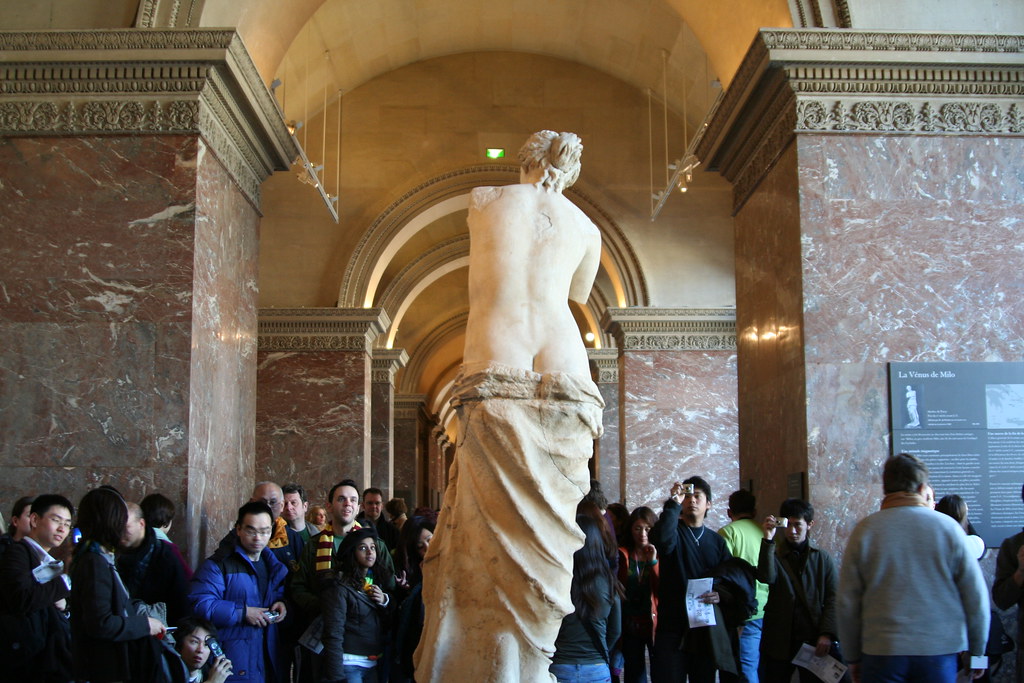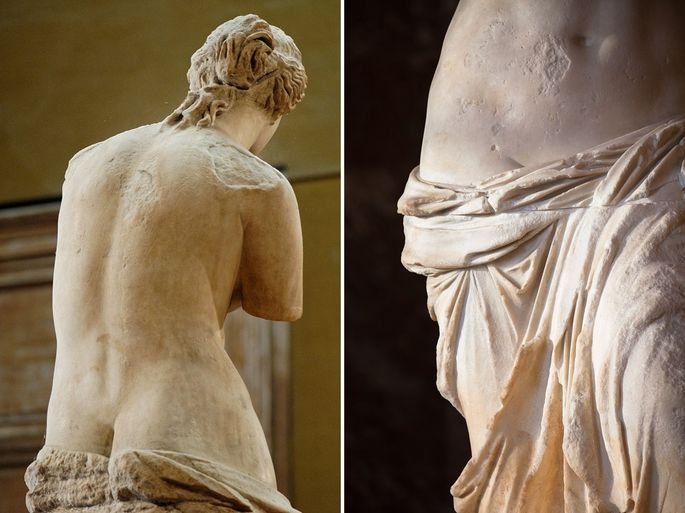
Venus de Milo: why is an armless statue the most iconic in art?
The Venus de Milo is a marble sculpture representing Venus, the Roman goddess of love and beauty. It is considered one of the masterpieces of ancient Greece and is one of the most famous symbols in the history of art. But how did an armless statue become this icon of universal culture?
The Venus de Milo was found in 1820 on the island of Milo, Greece, by a peasant who sold it to a French collector. It is now in the Louvre Museum in Paris. Since its discovery, the Venus de Milo appeared incomplete, and despite this, it was immediately considered a masterpiece due to the beauty and balance in its design.
On the missing limbs, the sculpture's arms were originally at the hips, probably holding an object such as a harpoon or shield. Although several theories have been proposed as to how he lost his arms, the true cause is still unknown.

The Venus de Milo is known for its beauty and aesthetic perfection. The sculpture features a nude female figure with a narrow waist, round hips and a curved figure. The technique used to create the sculpture is impressive, and, furthermore this beauty and perfection, is one of the reasons for its fame as primitive tools were used to carve the marble. The sculpture is also remarkable for the delicacy of the lines and the fluidity of the figure, which makes it seem alive and real to many people since its discovery.
The Venus de Milo is also important in the history of art because of its influence on the representation of Venus in Western culture. The sculpture has been imitated and adapted numerous times throughout history, and has served as a model for many other Venus sculptures. It has also been used as a symbol of beauty and the feminine ideal in literature, film and popular art.
Another curiosity about the Venus de Milo is that it is believed to have been created in the second century BC by the sculptor Praxiteles, although there is no conclusive evidence for this. Although the sculpture is believed to be a representation of Venus, it has also been suggested that it could be a representation of the goddess Athena or the goddess of the hunt, Artemis.

The Venus de Milo has also been the subject of controversy in the past due to its acquisition by France. The sculpture was purchased by the French government in 1820, but some have questioned the legality of the purchase due to the lack of documents supporting its sale. Despite this, the Venus de Milo has remained in the Louvre Museum ever since and is one of Paris' most popular tourist attractions.
Furthermore, in the 1950s, it was the subject of an attempted robbery by a group of thieves seeking to sell it on the black market. Although they were unsuccessful in the robbery, the incident highlighted the importance and value of the sculpture.
The Venus de Milo is one of the masterpieces of ancient Greece and one of the best known symbols of art history. Its beauty, balance and impressive technique make it a work worthy of admiration. All this, together with its influence on the representation of Venus in Western culture and its importance in the history of art, make a statue without arms a unique and valuable piece.
If you want to know other facts about the Louvre Museum and get information about the greatest works of art such as the Venus de Milo that houses the main museum of Paris and France, we recommend "The Louvre Art Guide" already available on Amazon by clicking here. If you prefer to buy it in bookstore, find your nearest bookstore by clicking here.
